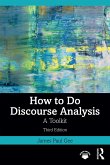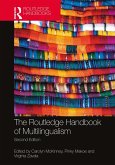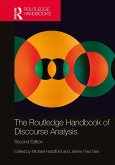42,95 €
42,95 €
inkl. MwSt.
Sofort per Download lieferbar

21 °P sammeln
42,95 €
Als Download kaufen

42,95 €
inkl. MwSt.
Sofort per Download lieferbar

21 °P sammeln
Jetzt verschenken
Alle Infos zum eBook verschenken
42,95 €
inkl. MwSt.
Sofort per Download lieferbar
Alle Infos zum eBook verschenken

21 °P sammeln
- Format: ePub
- Merkliste
- Auf die Merkliste
- Bewerten Bewerten
- Teilen
- Produkt teilen
- Produkterinnerung
- Produkterinnerung
- Weitere 7 Ausgaben:
- Gebundenes Buch
- Gebundenes Buch
- Broschiertes Buch
- Broschiertes Buch
- eBook, ePUB
- eBook, PDF
- eBook, PDF

Bitte loggen Sie sich zunächst in Ihr Kundenkonto ein oder registrieren Sie sich bei
bücher.de, um das eBook-Abo tolino select nutzen zu können.
Hier können Sie sich einloggen
Hier können Sie sich einloggen
Sie sind bereits eingeloggt. Klicken Sie auf 2. tolino select Abo, um fortzufahren.

Bitte loggen Sie sich zunächst in Ihr Kundenkonto ein oder registrieren Sie sich bei bücher.de, um das eBook-Abo tolino select nutzen zu können.
How to do Discourse Analysis provides a comprehensive toolkit for conducting discourse analysis. This new edition incorporates recent developments in digital communication and updates examples for contemporary relevance, making it an ideal resource for advanced undergraduate and postgraduate students.
- Geräte: eReader
- mit Kopierschutz
- eBook Hilfe
Andere Kunden interessierten sich auch für
![How to do Discourse Analysis (eBook, ePUB) How to do Discourse Analysis (eBook, ePUB)]() James Paul GeeHow to do Discourse Analysis (eBook, ePUB)42,95 €
James Paul GeeHow to do Discourse Analysis (eBook, ePUB)42,95 €![How to Do Discourse Analysis (eBook, PDF) How to Do Discourse Analysis (eBook, PDF)]() James Paul GeeHow to Do Discourse Analysis (eBook, PDF)42,95 €
James Paul GeeHow to Do Discourse Analysis (eBook, PDF)42,95 €![How to do Discourse Analysis (eBook, PDF) How to do Discourse Analysis (eBook, PDF)]() James Paul GeeHow to do Discourse Analysis (eBook, PDF)42,95 €
James Paul GeeHow to do Discourse Analysis (eBook, PDF)42,95 €![An Introduction to Discourse Analysis (eBook, ePUB) An Introduction to Discourse Analysis (eBook, ePUB)]() James Paul GeeAn Introduction to Discourse Analysis (eBook, ePUB)47,95 €
James Paul GeeAn Introduction to Discourse Analysis (eBook, ePUB)47,95 €![The Routledge Handbook of Multilingualism (eBook, ePUB) The Routledge Handbook of Multilingualism (eBook, ePUB)]() The Routledge Handbook of Multilingualism (eBook, ePUB)46,95 €
The Routledge Handbook of Multilingualism (eBook, ePUB)46,95 €![The Routledge Handbook of Discourse Analysis (eBook, ePUB) The Routledge Handbook of Discourse Analysis (eBook, ePUB)]() The Routledge Handbook of Discourse Analysis (eBook, ePUB)46,95 €
The Routledge Handbook of Discourse Analysis (eBook, ePUB)46,95 €![An Introduction to Discourse Analysis (eBook, PDF) An Introduction to Discourse Analysis (eBook, PDF)]() James Paul GeeAn Introduction to Discourse Analysis (eBook, PDF)47,95 €
James Paul GeeAn Introduction to Discourse Analysis (eBook, PDF)47,95 €-
-
-
How to do Discourse Analysis provides a comprehensive toolkit for conducting discourse analysis. This new edition incorporates recent developments in digital communication and updates examples for contemporary relevance, making it an ideal resource for advanced undergraduate and postgraduate students.
Dieser Download kann aus rechtlichen Gründen nur mit Rechnungsadresse in A, B, BG, CY, CZ, D, DK, EW, E, FIN, F, GR, HR, H, IRL, I, LT, L, LR, M, NL, PL, P, R, S, SLO, SK ausgeliefert werden.
Produktdetails
- Produktdetails
- Verlag: Taylor & Francis eBooks
- Erscheinungstermin: 28. Februar 2025
- Englisch
- ISBN-13: 9781040262856
- Artikelnr.: 73207372
- Verlag: Taylor & Francis eBooks
- Erscheinungstermin: 28. Februar 2025
- Englisch
- ISBN-13: 9781040262856
- Artikelnr.: 73207372
- Herstellerkennzeichnung Die Herstellerinformationen sind derzeit nicht verfügbar.
James Paul Gee is a Regents Professor, Emeritus, at Arizona State University and an elected member of the National Academy of Education. He is the author of many books and papers on linguistics, literacy, discourse analysis, and learning. His books include What Video Games Have to Teach Us About Literacy and Learning (2007), Introducing Discourse: From Grammar to Society (2017), and What Is a Human? (2020).
Introduction
Unit 1: Language and Context
1.1 Grammar
1.2 Language Acquisition
1.3 Speed and Clarity
1.4 Context and Cultural Knowledge
1.5 Making the Taken-for-Granted New and Strange
1.6 Working with The Making Strange Tool
1.7 Deixis
1.8 Working with the Deixis Tool
1.9 Context
1.10 Working with the Fill-In Tool
1.11 Subjects and Predicates
1.12 Working with Subject Tool
1.13 Intonation
1.14 Working with the Intonation Tool
1.15 The Frame Problem
1.16 The Frame Problem in Action
1.17 Working with the Frame Tool
Unit 2: Saying, Doing, and Designing
2.1 People Do things with Language, Not Just Say Things
2.2 Working with Doing and Not Just Saying Tool
2.3 Grammar as Tools for Structure and Meaning
2.4 Working with the Grammar as Choice Tool
2.5 Vocabulary
2.6 Working with the Vocabulary Tool
2.7 Topics and Themes
2.8 Working with the Topic and Theme Tool
2.9 Stanzas
2.10 Working with the Stanza Tool
Unit 3: Building Things in the World
3.1 Building Tasks
3.2 Building Things with Language
3.3 An Example: A Collaboration around Oral History
3.4 The Context is Reflexive Tool
3.5 Working with the Context is Reflexive Tool
3.6 Working with the Significance Building Tool
3.7 Working with the Practices/Activities Building Tool
3.8 Working with the Identities Building Tool
3.9 Working with the Relationships Building Tool
3.10 Working with the Politics Building Tool
3.11 Working with the Connections Building Tool
3.12 Working with the Sign Systems and Knowledge Building Tool
3.13 Topic Flow or Topic Chaining Tool
3.14 Working with the Topic Flow or Topic Chaining Tool
Unit 4: Theoretical Tools
4.1 Six Theoretical Tools
4.2 The Situational Meaning Tool
4.3 Working with the Situational Meaning Tool
4.4 The Social Languages Tool
4.5 Working with the Social Languages Tool
4.6 The Intertextuality Tool
4.7 Working with the Intertextuality Tool
4.8 The Figured Worlds Tool
4.9 Working with the Figured Worlds Tool
4.10 The Big "D" Discourse Tool
4.11 Working with the Big "D" Discourse Tool
4.12 Notes about Discourses
4.13 Notes about DiscoursesThe Big "C" Conversation Tool
4.14 Working with the Big "C" Conversation Tool
4.15 Conclusion
Unit 1: Language and Context
1.1 Grammar
1.2 Language Acquisition
1.3 Speed and Clarity
1.4 Context and Cultural Knowledge
1.5 Making the Taken-for-Granted New and Strange
1.6 Working with The Making Strange Tool
1.7 Deixis
1.8 Working with the Deixis Tool
1.9 Context
1.10 Working with the Fill-In Tool
1.11 Subjects and Predicates
1.12 Working with Subject Tool
1.13 Intonation
1.14 Working with the Intonation Tool
1.15 The Frame Problem
1.16 The Frame Problem in Action
1.17 Working with the Frame Tool
Unit 2: Saying, Doing, and Designing
2.1 People Do things with Language, Not Just Say Things
2.2 Working with Doing and Not Just Saying Tool
2.3 Grammar as Tools for Structure and Meaning
2.4 Working with the Grammar as Choice Tool
2.5 Vocabulary
2.6 Working with the Vocabulary Tool
2.7 Topics and Themes
2.8 Working with the Topic and Theme Tool
2.9 Stanzas
2.10 Working with the Stanza Tool
Unit 3: Building Things in the World
3.1 Building Tasks
3.2 Building Things with Language
3.3 An Example: A Collaboration around Oral History
3.4 The Context is Reflexive Tool
3.5 Working with the Context is Reflexive Tool
3.6 Working with the Significance Building Tool
3.7 Working with the Practices/Activities Building Tool
3.8 Working with the Identities Building Tool
3.9 Working with the Relationships Building Tool
3.10 Working with the Politics Building Tool
3.11 Working with the Connections Building Tool
3.12 Working with the Sign Systems and Knowledge Building Tool
3.13 Topic Flow or Topic Chaining Tool
3.14 Working with the Topic Flow or Topic Chaining Tool
Unit 4: Theoretical Tools
4.1 Six Theoretical Tools
4.2 The Situational Meaning Tool
4.3 Working with the Situational Meaning Tool
4.4 The Social Languages Tool
4.5 Working with the Social Languages Tool
4.6 The Intertextuality Tool
4.7 Working with the Intertextuality Tool
4.8 The Figured Worlds Tool
4.9 Working with the Figured Worlds Tool
4.10 The Big "D" Discourse Tool
4.11 Working with the Big "D" Discourse Tool
4.12 Notes about Discourses
4.13 Notes about DiscoursesThe Big "C" Conversation Tool
4.14 Working with the Big "C" Conversation Tool
4.15 Conclusion
Introduction
Unit 1: Language and Context
1.1 Grammar
1.2 Language Acquisition
1.3 Speed and Clarity
1.4 Context and Cultural Knowledge
1.5 Making the Taken-for-Granted New and Strange
1.6 Working with The Making Strange Tool
1.7 Deixis
1.8 Working with the Deixis Tool
1.9 Context
1.10 Working with the Fill-In Tool
1.11 Subjects and Predicates
1.12 Working with Subject Tool
1.13 Intonation
1.14 Working with the Intonation Tool
1.15 The Frame Problem
1.16 The Frame Problem in Action
1.17 Working with the Frame Tool
Unit 2: Saying, Doing, and Designing
2.1 People Do things with Language, Not Just Say Things
2.2 Working with Doing and Not Just Saying Tool
2.3 Grammar as Tools for Structure and Meaning
2.4 Working with the Grammar as Choice Tool
2.5 Vocabulary
2.6 Working with the Vocabulary Tool
2.7 Topics and Themes
2.8 Working with the Topic and Theme Tool
2.9 Stanzas
2.10 Working with the Stanza Tool
Unit 3: Building Things in the World
3.1 Building Tasks
3.2 Building Things with Language
3.3 An Example: A Collaboration around Oral History
3.4 The Context is Reflexive Tool
3.5 Working with the Context is Reflexive Tool
3.6 Working with the Significance Building Tool
3.7 Working with the Practices/Activities Building Tool
3.8 Working with the Identities Building Tool
3.9 Working with the Relationships Building Tool
3.10 Working with the Politics Building Tool
3.11 Working with the Connections Building Tool
3.12 Working with the Sign Systems and Knowledge Building Tool
3.13 Topic Flow or Topic Chaining Tool
3.14 Working with the Topic Flow or Topic Chaining Tool
Unit 4: Theoretical Tools
4.1 Six Theoretical Tools
4.2 The Situational Meaning Tool
4.3 Working with the Situational Meaning Tool
4.4 The Social Languages Tool
4.5 Working with the Social Languages Tool
4.6 The Intertextuality Tool
4.7 Working with the Intertextuality Tool
4.8 The Figured Worlds Tool
4.9 Working with the Figured Worlds Tool
4.10 The Big "D" Discourse Tool
4.11 Working with the Big "D" Discourse Tool
4.12 Notes about Discourses
4.13 Notes about DiscoursesThe Big "C" Conversation Tool
4.14 Working with the Big "C" Conversation Tool
4.15 Conclusion
Unit 1: Language and Context
1.1 Grammar
1.2 Language Acquisition
1.3 Speed and Clarity
1.4 Context and Cultural Knowledge
1.5 Making the Taken-for-Granted New and Strange
1.6 Working with The Making Strange Tool
1.7 Deixis
1.8 Working with the Deixis Tool
1.9 Context
1.10 Working with the Fill-In Tool
1.11 Subjects and Predicates
1.12 Working with Subject Tool
1.13 Intonation
1.14 Working with the Intonation Tool
1.15 The Frame Problem
1.16 The Frame Problem in Action
1.17 Working with the Frame Tool
Unit 2: Saying, Doing, and Designing
2.1 People Do things with Language, Not Just Say Things
2.2 Working with Doing and Not Just Saying Tool
2.3 Grammar as Tools for Structure and Meaning
2.4 Working with the Grammar as Choice Tool
2.5 Vocabulary
2.6 Working with the Vocabulary Tool
2.7 Topics and Themes
2.8 Working with the Topic and Theme Tool
2.9 Stanzas
2.10 Working with the Stanza Tool
Unit 3: Building Things in the World
3.1 Building Tasks
3.2 Building Things with Language
3.3 An Example: A Collaboration around Oral History
3.4 The Context is Reflexive Tool
3.5 Working with the Context is Reflexive Tool
3.6 Working with the Significance Building Tool
3.7 Working with the Practices/Activities Building Tool
3.8 Working with the Identities Building Tool
3.9 Working with the Relationships Building Tool
3.10 Working with the Politics Building Tool
3.11 Working with the Connections Building Tool
3.12 Working with the Sign Systems and Knowledge Building Tool
3.13 Topic Flow or Topic Chaining Tool
3.14 Working with the Topic Flow or Topic Chaining Tool
Unit 4: Theoretical Tools
4.1 Six Theoretical Tools
4.2 The Situational Meaning Tool
4.3 Working with the Situational Meaning Tool
4.4 The Social Languages Tool
4.5 Working with the Social Languages Tool
4.6 The Intertextuality Tool
4.7 Working with the Intertextuality Tool
4.8 The Figured Worlds Tool
4.9 Working with the Figured Worlds Tool
4.10 The Big "D" Discourse Tool
4.11 Working with the Big "D" Discourse Tool
4.12 Notes about Discourses
4.13 Notes about DiscoursesThe Big "C" Conversation Tool
4.14 Working with the Big "C" Conversation Tool
4.15 Conclusion







